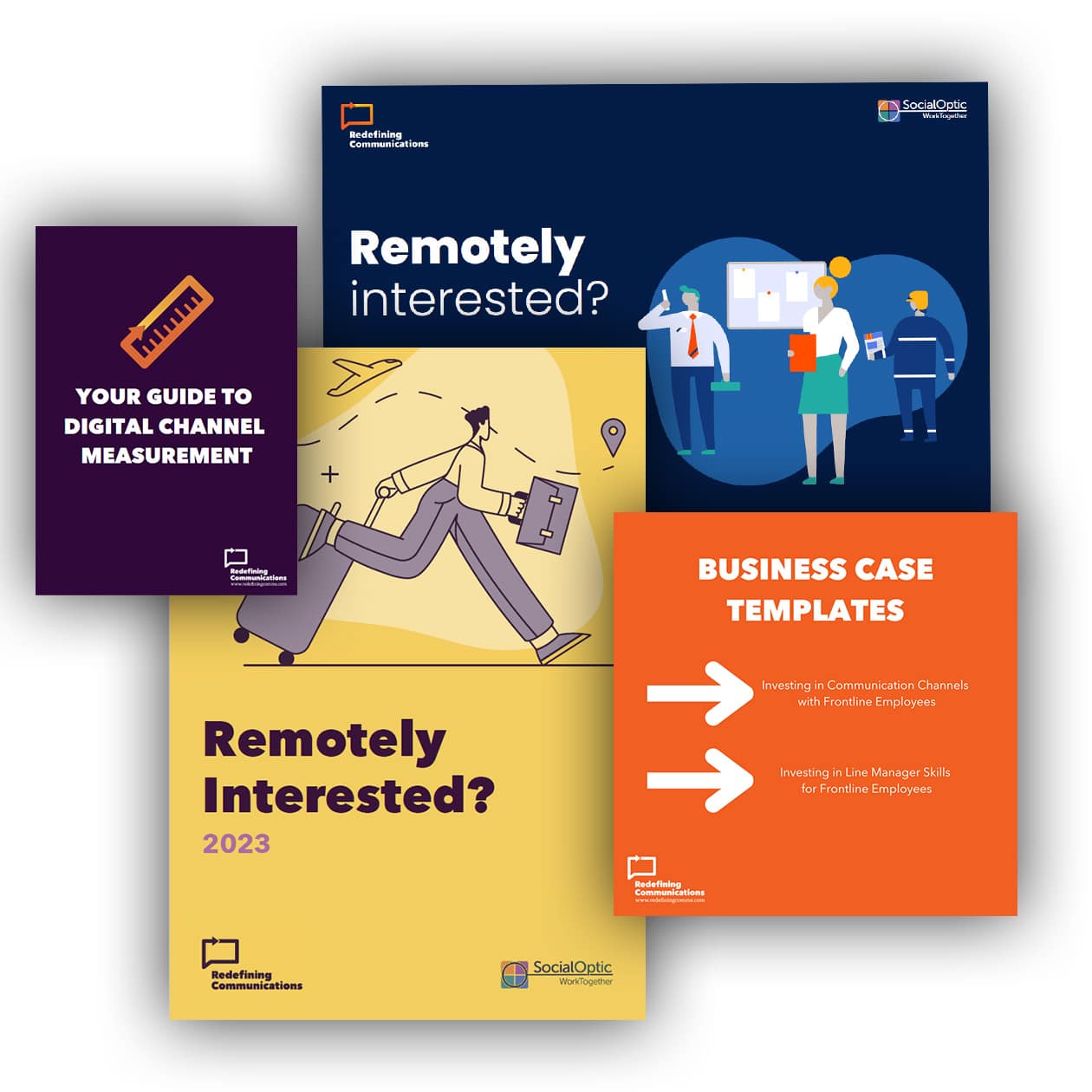Deskless Workers Communication Toolkit
Explore how you can communicate effectively with hard-to-reach employees
Around 80% of the world’s workforce are believed to be ‘deskless’.
This includes those in hospitality, manufacturing, retail, healthcare, transport, construction, public services and more.
83% of deskless workers feel part of the team they work in
Only 36% of remote workers believe their manager is an accurate source of information
27% of deskless workers had too little information about their organisation
Being able to communicate with deskless or frontline employees means we need to think differently.
How can you get investment to improve line manager skills?
How can we measure the effectiveness of digital channels with them?
How should we communicate with deskless workers?
One of the most comprehensive studies ever carried out into these hard-to-reach workers, Remotely Interested brings together insights from more than 650 deskless staff across 16 organisations.
Workers were asked what they thought about their managers, senior leaders, the tools used to communicate with them and the quality of the content they received.
In this masterclass, we uncover the main findings and what we can do to improve our communication with deskless workers.
“It was a really useful session and as I’m currently trying to get some evidence together so that I can get buy in and hopefully budget, to help improve communications for our mobile trade colleagues, this comes at a good time. I look forward to using the toolkit.”
Claire Gough
Deskless Workers Communication Toolkit
In 2019 and 2023 we carried out research to find out how to communicate with deskless workers. Our Remotely Interested? Reports have highlighted why content needs to be different for different types of deskless worker and the importance of line manager communication skills.
The toolkit includes both research reports, two business case templates to help you influence leaders to invest in channels and invest in the communication skills of line managers. We have also included a guide to digital channel measurement!
Free guide: 8 ways to improve communication with deskless workers

What’s inside?
Deskless Workers Communication Toolkit has reports and practical tools for just £149 to help you make real change inside your organisation. The research captures insights from both before and after the COVID-19 pandemic, showing the rise of tools like WhatsApp and the risks that has for organisations today.
Full Research Reports (2019 & 2023)
Two Business Case Templates to get buy-in for a new channel or improving line manager communication skills
Step-by-Step Guide to Digital Channel Measurement
Download the toolkit today:
Toolkit only
Get the toolkit today for £149

